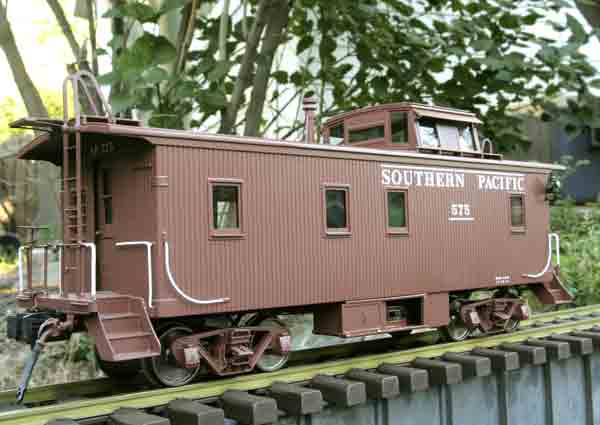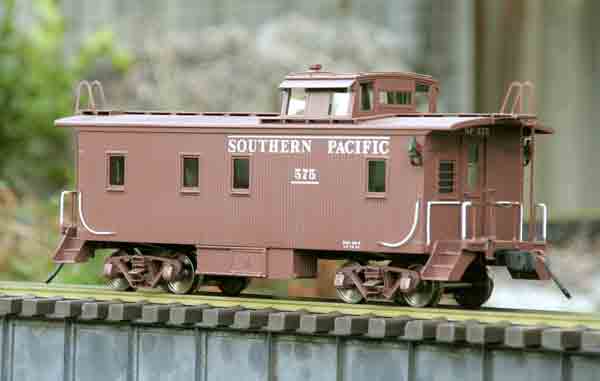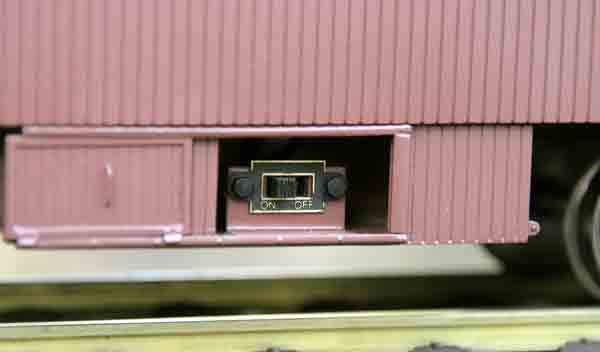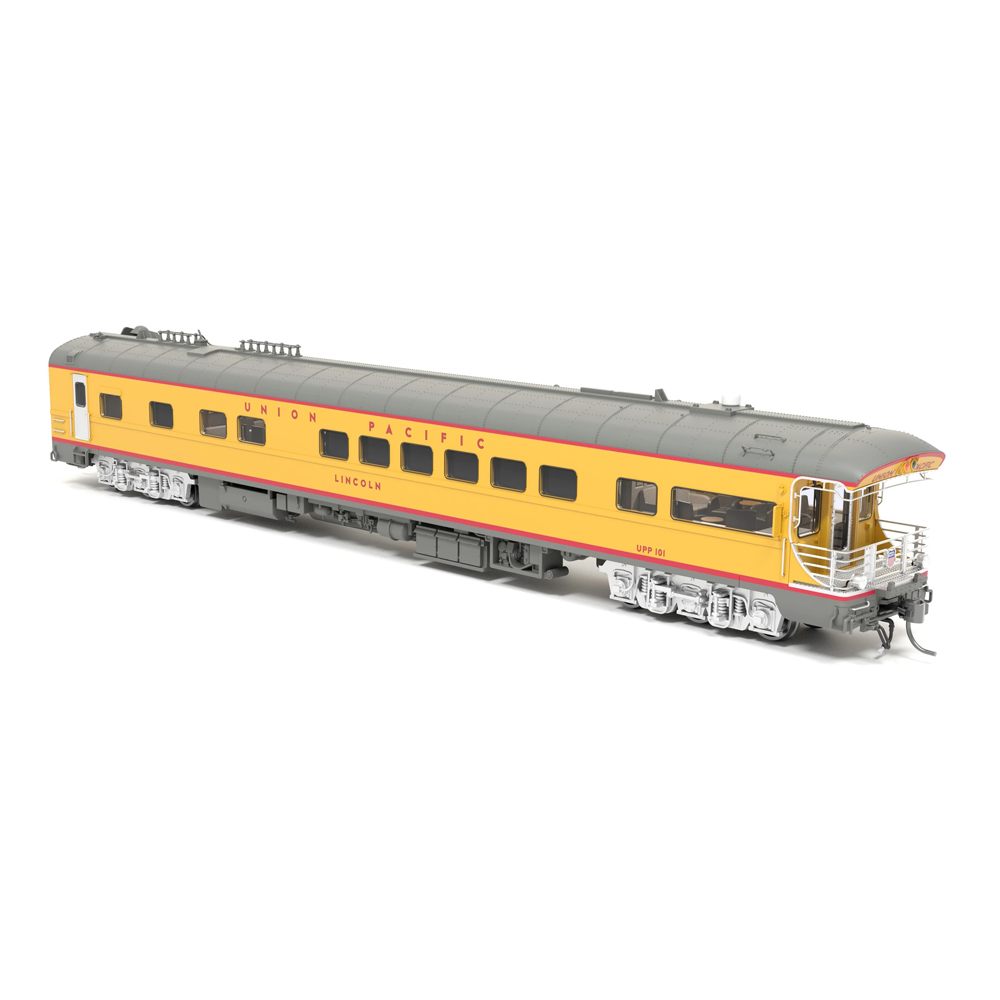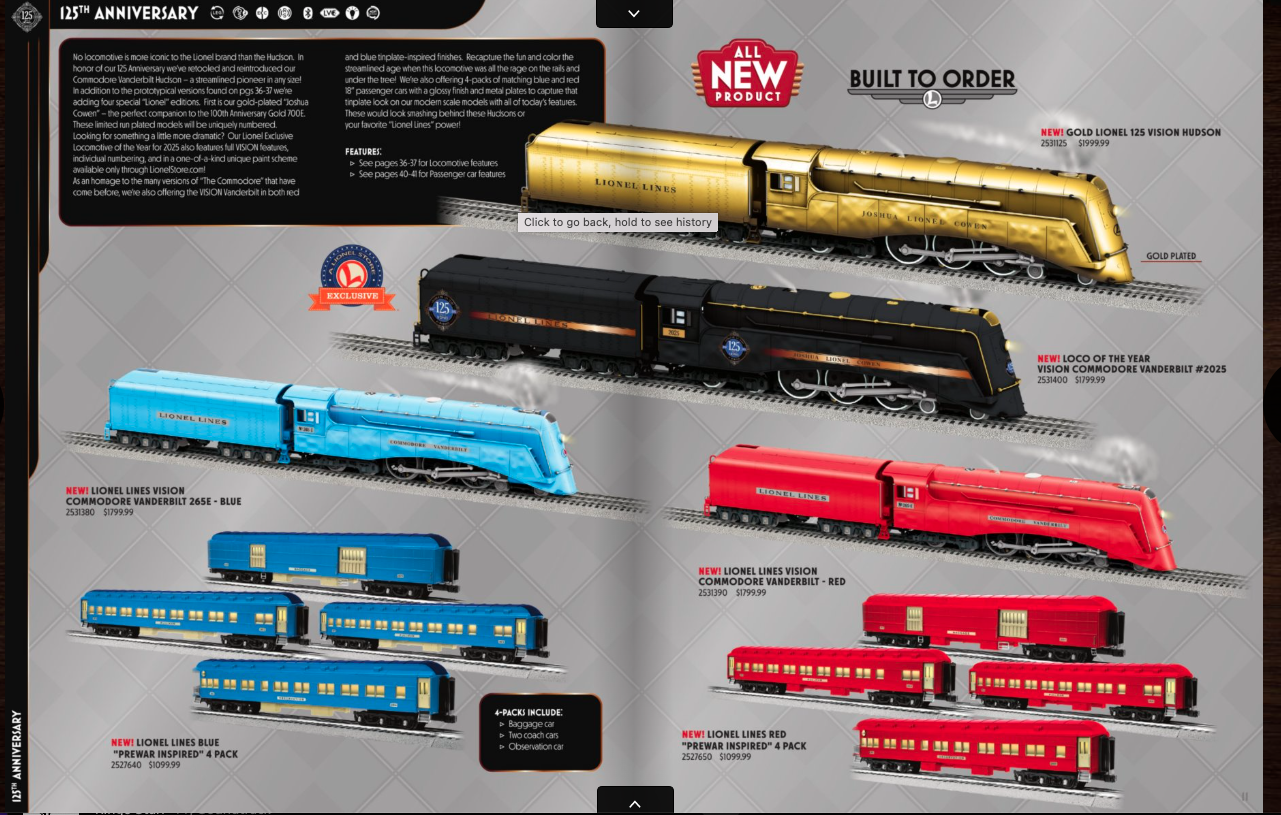1:32 scale, gauge-1 brass Southern Pacific caboose
Accucraft Trains
33268 Central Ave.
Union City CA 94587
Price: $399
Web site: www.accucraft.com
All-brass model of a Southern Pacific C-30-1 caboose; interior detail; lighted. Dimensions: length, 133/8″; width, 33/4″ (exclusive of marker lamps); height, 57/8″. In 1:32 scale, this works out to 35’8″ x 10’0″ x 15’8″, respectively. Minimum radius, 2’6″
Pros: Well detailed; matches prototype dimensions; crisp lettering; fully detailed interior; correct scale/gauge combination
Cons: Electrical pickups on trucks cause undue drag
Southern Pacific built nearly 620 of these cabooses between 1920 and 1927. Many lasted in service until the early 60s, when new government regulations made it cheaper to replace the old
cabooses rather than update them.
Accucraft’s 1:32-scale brass model of this venerable caboose captures the prototype well. Its dimensions are virtually spot on for the prototype’s. The sample’s lettering is crisp, with the review sample representing the earlier style of lettering. Accucraft also offers this caboose in the later style, as well as unlettered.
The caboose comes with a full interior, which is best seen in the dark when the caboose’s interior lights are illuminated. Lights are powered from the track and can be turned on and off by a switch hidden in one of the tool/battery boxes on the underside of the caboose. End doors do open, but are sprung so that they close again. All the windows have clear plastic “glass” in them. The cupola on the model has an extra “window” on the front and rear walls, between the two main windows.
Originally, train numbers were displayed in this opening, which would make a neat detail to see at night. This practice was discontinued around 1929, though, and the number boxes removed. On most, the opening was replaced with glass (as modeled), though some were covered with wood.
One improvement over past 1:32 offerings from Accucraft is the now-functional 1:32-scale knuckle couplers. Previous couplers did not operate, so this is a welcome development. The coupler pocket is similar to that of a Kadee #820 (#1 scale) coupler, and Accucraft’s mate well with Kadees. (Accucraft tells me they will eventually sell these couplers as separate items.)
One thing that still needs to be improved, however, is the electrical pickup from the track. Accucraft uses a phosphor-bronze strip that rubs against the back of the metal wheels to transfer power from the track to the lights. This creates a significant amount of drag on the wheels-so much so that the caboose is reluctant to roll down a 4% grade on its own. I would think that ball bearings in the wheels would improve this and, on a brass caboose, would not cause the price to increase significantly.
All in all, though, this is a well-done unit, every bit up to Accucraft’s usual high quality for their brass models. It would be a fitting end to any freight train headed up by one of Accucraft’s Southern Pacific locomotives.





